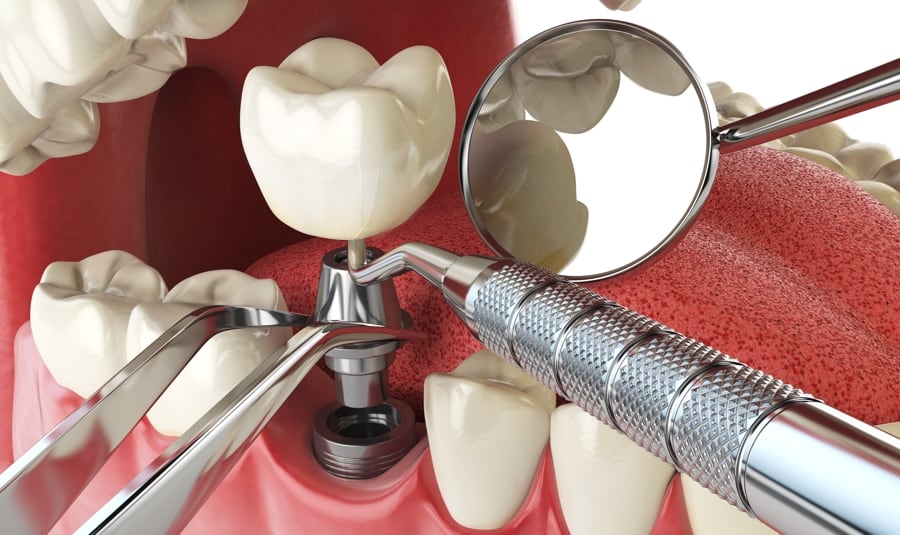
Dental implants have revolutionised modern dentistry, offering a permanent solution for missing teeth that closely resembles natural teeth in both form and function. However, the process of getting dental implants can seem daunting to many patients. Understanding each step of the journey can alleviate fears and uncertainties, empowering individuals to make informed decisions about their oral health. Let’s embark on a comprehensive exploration of dental implants procedures, step by step.
Step 1: Initial Consultation
The journey begins with an initial consultation with a dental implant specialist. During this visit, the dentist will conduct a thorough examination of the patient’s oral health, including X-rays and 3D imaging to assess bone structure and gum health. This evaluation helps determine if the patient is a suitable candidate for dental implants and allows the dentist to develop a personalised treatment plan tailored to the individual’s needs.
Step 2: Treatment Planning
Based on the findings from the initial consultation, the dentist will collaborate with the patient to create a treatment plan. This plan outlines the number of implants needed, the type of implant system to be used, and any additional procedures, such as bone grafting or sinus lifts, that may be necessary to ensure the success of the implants. These additional procedures will also influence the dental implants procedure time. Clear communication between the patient and the dental team is essential during this stage to address any questions or concerns and establish realistic expectations.
Step 3: Preparatory Procedures (if necessary)
In some cases, patients may require preparatory procedures before implant placement to optimise the outcome. This is called bone grafting. Dental implants procedures with bone graft is meant to augment insufficient bone volume or a sinus lift to create space in the upper jaw. These procedures help create a solid foundation for the implants and may require additional healing time before proceeding to the next step.
Step 4: Implant Placement Surgery
The cornerstone of the dental implant procedure is the surgical placement of the implants into the jawbone. This procedure is typically performed under local anaesthesia to ensure patient comfort. Using precision-guided techniques, the dentist creates small incisions in the gum tissue to access the underlying bone. The implants, which are made of biocompatible materials such as titanium, are then carefully inserted into the bone and positioned at strategic locations to support the replacement teeth.
Step 5: Osseointegration
Once the implants are in place, a process called osseointegration begins. This is the natural healing process where the bone fuses with the surface of the implants, anchoring them securely in the jaw. Osseointegration is crucial for the long-term success of dental implants, as it provides stability and durability comparable to natural teeth. During this period, which typically takes several months, patients may be fitted with temporary restorations to maintain aesthetics and function.
Step 6: Abutment Placement
After osseointegration is complete, the next step in tooth implants procedures is the placement of abutments. Abutments are small connector pieces that attach to the implants and serve as the foundation for the final restorations. They are customised to fit the contours of the patient’s gums and provide optimal support for the prosthetic teeth. Once the abutments are in place, impressions are taken to fabricate the final restorations.
Step 7: Final Restoration
With the abutments in position, the final restorations can be attached to the implants. These restorations, which may be crowns, bridges, or implant-supported dentures, are meticulously crafted to blend seamlessly with the patient’s natural teeth in color, shape, and function. The result is a beautiful, functional smile that restores confidence and enhances overall quality of life.
Step 8: Follow-up Care
Even after the final restorations are in place, the journey of dental implant treatment continues with regular follow-up appointments. These appointments allow the dentist to monitor the health and stability of the implants, address any concerns that may arise, and provide guidance on proper oral hygiene practices to maintain the longevity of the implants.
In conclusion, the journey of dental implant procedure is a meticulously planned and executed process that requires collaboration between the patient and the dental team at every step. By understanding each phase of the journey, patients can embark on their implant journey with confidence, knowing that they are on the path to a healthier, more beautiful smile that will last a lifetime.

